What about the creatures that were thought to live in the Sea? This post compiles different enchanting sea monsters observed on Medieval maps.
The sea frightens and has been the stage for odd and strange tales since antiquity. Some of the things that make the ocean so mystic and terrifying is its constant shifting and moving and the water itself, often cold and dark, and deadly to drink in quantity. Discover some of the oddest deep sea creatures that populated European medieval and renaissance imaginations!
1. Jonah and the Sea dog – 1570
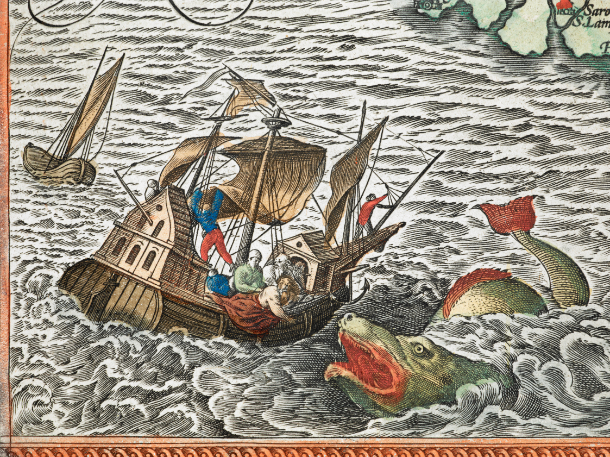
The first image is from the earliest known atlas, the Theatrum orbis terrarum. It was drawn by the Flemish cartographer Abraham Ortelius and first published in 1570. Jonah is cast overboard to a kind of Loch Ness monster with a terrifying dog head.
2. Ichthyocentaur: a mixture of human, horse and fish – 1573
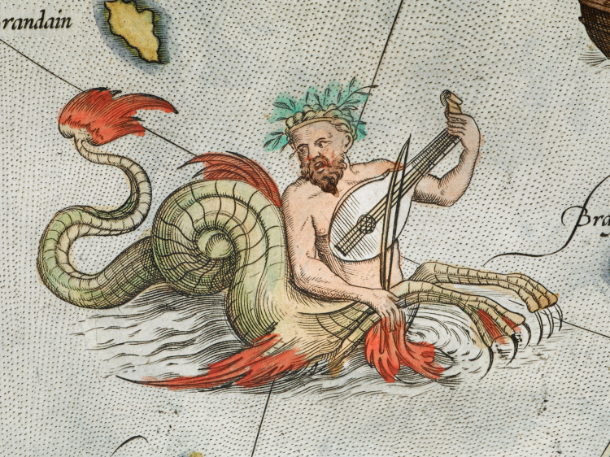
The ichthyocentaur is a sea creature combining human, horse and fish parts. This special one was drawn on a Scandinavian map in 1573 in Ortelius’s Theatrum orbis terrarum. Although strange and odd, ichthyocentaurs were traditionally peaceful creatures.
3. The sea pig – 1539
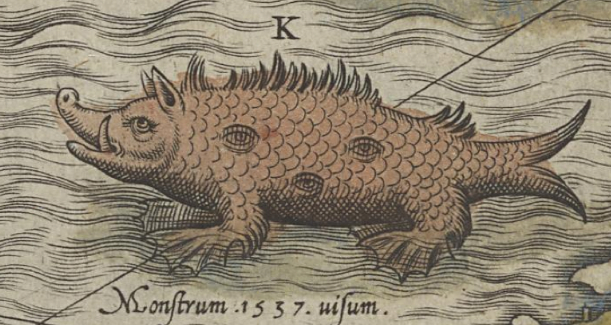
The mysterious sea swine or sea pig was a pretty bad omen. It was compared to heretics that distorted truth. The present specimen appeared on Olaus Magnus’s 1539 Carta Marina and lived in the North Sea.
4. Dangerous whales – 1539
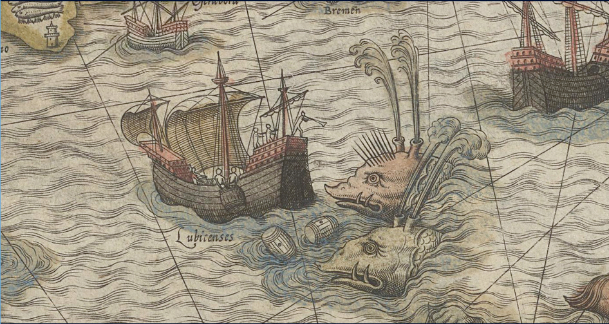
This is now discordant to our time! Medieval maps pictured whales as dangerous sea monsters whereas, nowadays they are observed as peaceful mammals. In this caption of Olaus Magnus’s 1539 Carta Marina two whales attack a ship. Sailors try to scare them away by tossing barrels and playing a trumpet.
5. The giant polypus
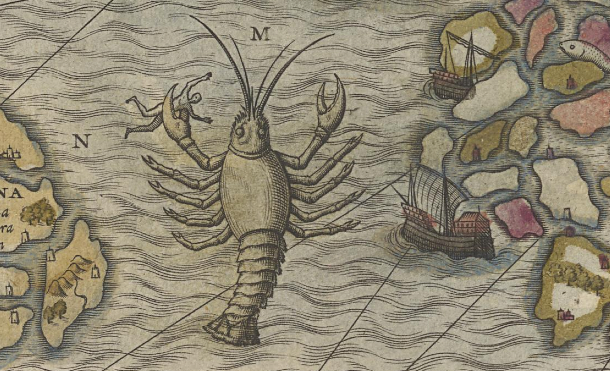
Mysterious giant polypus were creatures having many legs and arms from the crab to the centipede or octopus. They represent a threat for sailors. The map is from Olaus Magnus (1539).
6. The beautiful siren or mermaid
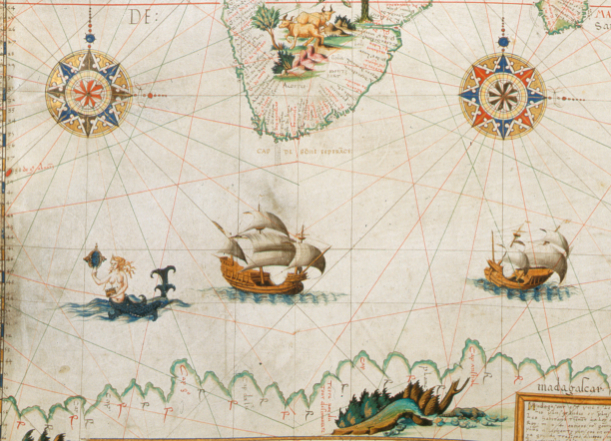
This last map from 1550 features a siren admiring herself in a mirror. Wanting another sailor? Or a simple sign of vanity? The map was done by Pierre Descelier. Other monsters can be seen on the surrounding land. British Library and the University of Chicago Press.
Which one did you prefer? If you enjoyed the article and want to learn more about these maps and monsters, two new books focus exclusively on such illustrations: Sea Monsters on Medieval and Renaissance Maps by Chet Van Duzer, and Sea Monsters: A Voyage around the World’s Most Beguiling Map
by Joseph Nigg.




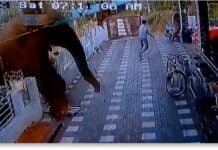

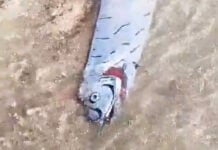





[…] also worth considering what people believed lived in places and under the sea as they often put pictures of them on their maps as well. But don’t stuff your map so full of detail that you […]